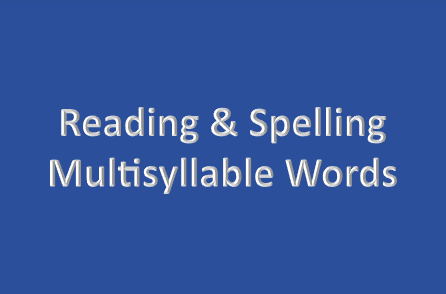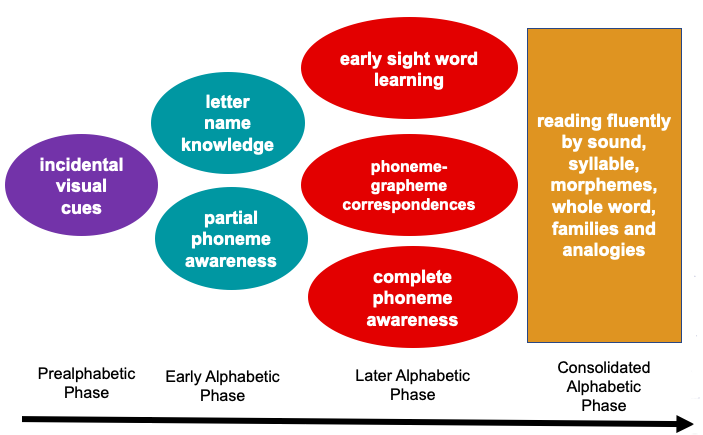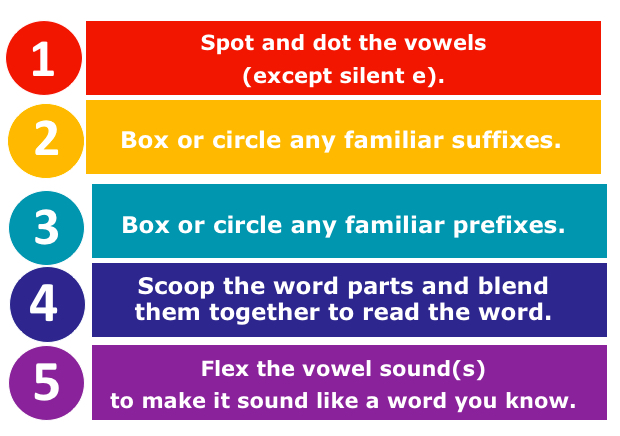What is advanced word study?

Keys to Literacy recently launched its newest professional development program: Advanced Word Study – Grade 4 and Beyond. Sometimes referred to as advanced phonics, instruction for advanced word study teaches students how to read and spell multi-syllable words by using a combination of word analysis that focuses on syllables, and structural analysis that focuses on meaningful units (morphemes – roots, prefixes, suffixes). Learning how to focus on morphemes also helps students determine the meaning of an unfamiliar word.
During kindergarten through grade 3, students are developing phonemic awareness and learning beginning phonics concepts that support word reading. Because English has an alphabetic written language, these skills are essential for learning how to decode unfamiliar words and develop the ability to use the orthographic mapping process to map and remember thousands of sight words, enabling fluent reading. In a previous post I discussed the value of a phonics scope and sequence that covers phonics concepts from basic letter-sound correspondences in kindergarten to advanced correspondences and learning syllable types in grade 3.
What type of advanced word study instruction do students need beyond grade 3? Students in grade 4 and above who are still having difficulty with basic decoding skills may need supplemental instruction for the basic skills described in the previous paragraph. However, most students beyond grade 3 benefit from instruction that focuses on strategies and practice for reading unfamiliar, multi-syllable words. Ehri’s Phases of Word Reading Development (1991) provides a model of how word recognition develops over time. As shown in the graphic below, there are four phases: Pre-alphabetic, Early Alphabetic, Later Alphabetic, and Consolidated Alphabetic. Advanced word study instruction is for students who have reached the Consolidated Alphabetic phase where they are beginning to read fluently by sound, syllable, and morphemes, typically during grade 3 and the start of grade 4. This includes instruction to build automatic recognition of the six syllable types, application of syllable division principles, recognition of morphological (meaningful) units within words, an understanding of the schwa vowel sound in unaccented syllables, and knowledge of spelling rules for adding suffixes.

English is a Morphophonemic Language, Including Words Derived From Greek and Latin
Written English words are comprised of both sound-spelling correspondences and morphemes that provide clues to meaning. We spell by both the sounds in words (phonemes) and the meaning represented in word parts (morphemes). Certain morphemes keep their written spelling even though their phonemic forms change. When the sound in a word changes in a different variation of the word, the spelling does not change. This can be challenging for students when they read or spell more complex words in grade 4 and beyond. For example, read the sample pairs of words below and notice how the spellings for parts of the words stay the same even though the sound changes.

Another challenge for students is that a large percentage of words learned after grade 3 are multi-syllable words derived from Latin and Greek (Carlisle, 2007); 60% of unfamiliar words in middle school books are derived words (Nagy & Anderson, 1984). These words consist of roots that hold the core meaning of the word, and prefixes and suffixes that can alter the meaning or function of a word. Once students begin reading multi-syllable words, they are further challenged by the occurrence of the schwa vowel sound. The schwa is the most common vowel sound in the English language, accounting for 20% of the vowel sounds (Yule, 1996), and it often is the cause of spelling mistakes. The schwa sound is formed with a neutral mouth position, and it replaces a vowel sound in the unaccented syllables of multi-syllable words. It is sometimes called the “lazy” vowel, and can sound like a muffled version of the short u sound or the short i sound, as in the words problem, magazine, human, analysis. It can be spelled with any vowel. See a previous post I wrote about schwa for more details and examples.
Instructional Suggestions
Multi-syllable word reading and spelling is aided by the application of an approach that COMBINES:
- Word analysis focused on syllables: breaking words into parts by identifying vowel sounds, applying syllable division rules, saying each part, then putting the parts together to say the word
- Structural analysis focused in meaningful units: reading words through recognition of roots, prefixes, and suffixes
Common Core Reading Foundations standard 4.3.a for grade four expects students to “use combined knowledge of all letter-sound correspondences, syllabication patterns, and morphology (e.g., roots and affixes) to read accurately unfamiliar multisyllable words in context and out of context.”
In order to apply word analysis, students must learn to automatically recognize the six syllable types (closed, open, silent-e, vowel team, vowel-r, and consonant-le). They must also learn how to fluently apply basic syllable division rules, including 1) VCCV, divide between C’s (rab/bit); 2) VCV, usually divide before the C, then try after the C (mu/sic, cab/in); 3) words ending in consonant-le – the 3 letters stay together (bub/ble, ri/fle). In order to apply structural analysis, students must learn to recognize roots, prefixes, and suffixes.
Students benefit from learning a routine for “attacking” an unfamiliar, multi-syllable word. Click here to watch a video of a routine offered by PaTTAN of Pennsylvania titled Reading Big Words. The example below of a word analysis routine is from Keys to Literacy’s new professional development offering, Advanced Word Study – Grade 4 and Beyond.

To support spelling of multi-syllable words for which a suffix has been added, it is helpful for students to learn the following spelling rules:
- Doubling Rule 1-1-1: if a one-syllable base word ends in one consonant with one short vowel before it, double the final consonant of the base word when adding a suffix that begins with a vowel. (mad + est = maddest, mad + ly – madly)
- Doubling Rule for Two-Syllable Words: two-syllable words double the final consonant before a suffix that begins with a vowel if the second syllable of the word is CVC, and if the stress (accent) falls on the second syllable (admit + ed = admitted, limit + ed = limited)
- Silent E Rule: words ending in a silent e drop the e before a suffix beginning with a vowel, but do not drop the e before a suffix beginning with a consonant (hope, hoping, hopeful)
- Y Rule: final y after a consonant changes to i before any suffix except one beginning with i (copy/copies/copying)
Teaching Advanced Word Study in Any Subject
While it is typically assumed that the English language arts teacher should be responsible for teaching students these skills, students must read multi-syllable words in every subject. Academic words derived from Latin and Greek appear in all content area text, and it is often the case where science and math present the best opportunities to practice the application of advanced word analysis skills. Every teacher, regardless of the subject-area taught, can play a role in helping students learn to apply advanced word study skills to read, spell, and identify the meaning of unfamiliar, longer words.
References
- Carlisle, J.F. (2007). Fostering morphological processing, vocabulary development, and reading comprehension. In R.K. Wagner, A.E. Muse, & K.R. Tannenbaum (Eds.). Vocabulary acquisition: Implications for reading comprehension. New York: The Guilford Press.
- Ehri, L. C. (1991). Development of the ability to read words. In R. Barr, M. L. Kamil, P. B. Mosenthal, & P. D. Pearson (Eds.), Handbook of reading research, Vol. 2, pp. 383–417). Lawrence Erlbaum Associates, Inc.
- Nagy, W.E. & Anderson, R.C. (1984). How many words are there in printed school English? Reading Research Quarterly, 19, 304-330.
- Yule, G. (1996). The study of language (2nd ed.). Cambridge, England: Cambridge University Press.

 Joan Sedita is the founder of Keys to Literacy and author of the Keys to Literacy professional development programs. She is an experienced educator, nationally recognized speaker and teacher trainer. She has worked for over 35 years in the literacy education field and has presented to thousands of teachers and related professionals at schools, colleges, clinics, and professional conferences.
Joan Sedita is the founder of Keys to Literacy and author of the Keys to Literacy professional development programs. She is an experienced educator, nationally recognized speaker and teacher trainer. She has worked for over 35 years in the literacy education field and has presented to thousands of teachers and related professionals at schools, colleges, clinics, and professional conferences.
When and where is the soonest and closest training?
Keys to Literacy is running a virtual-live training for the Advanced Word Study: Grade 4 and Beyond on Jan. 27, 2022. Check the EVENTS page for listings of trainings that are open to the public.
Thanks for acknowledging the importance of writing when others do not!
Joan Sedita is so knowledgeable. I really like all the available video samples as well. Thank you